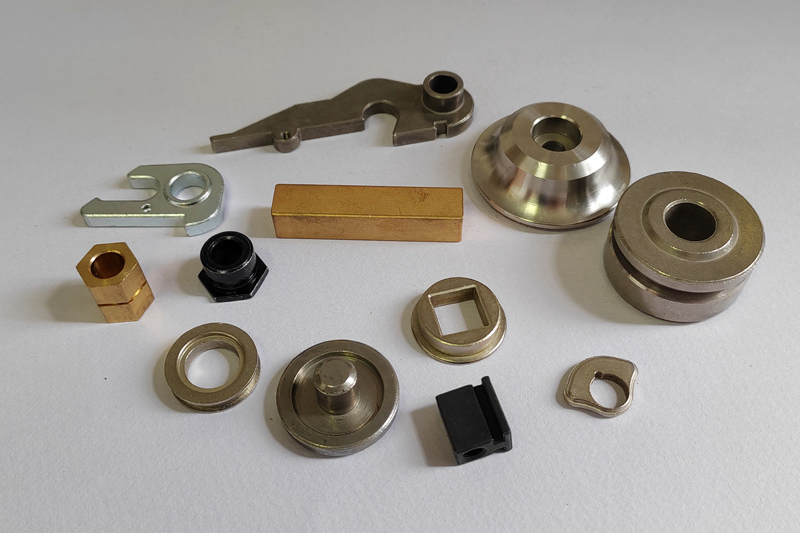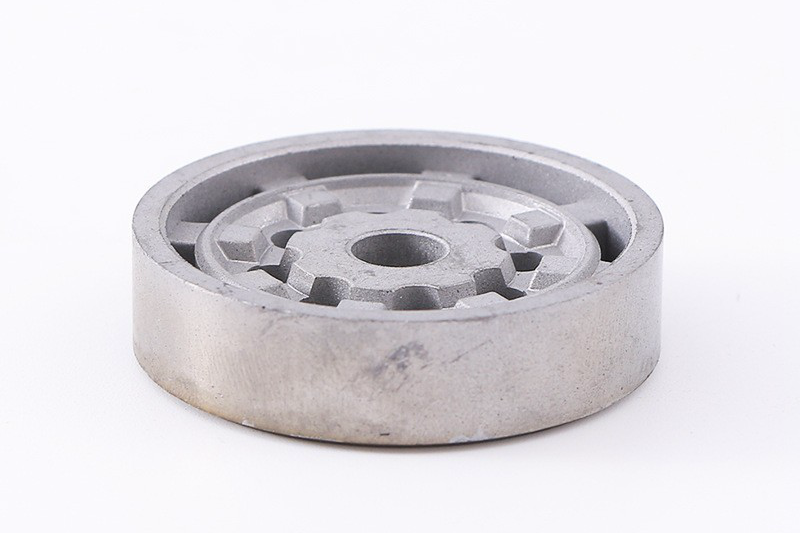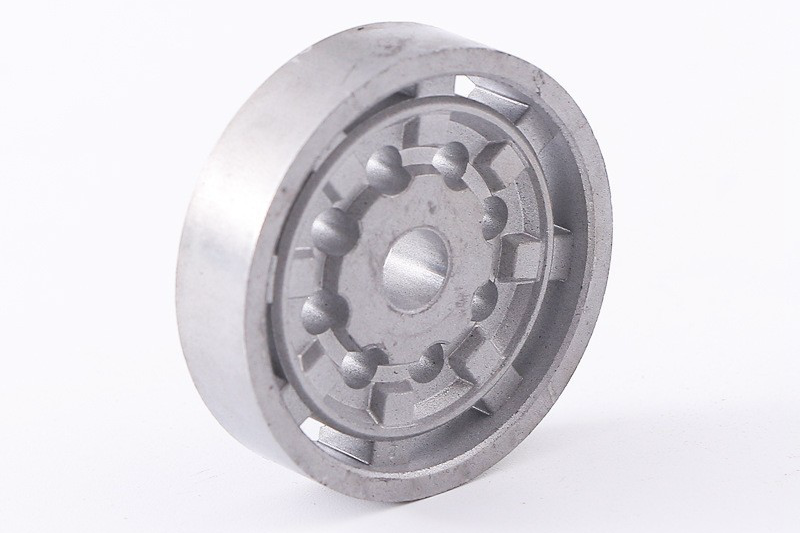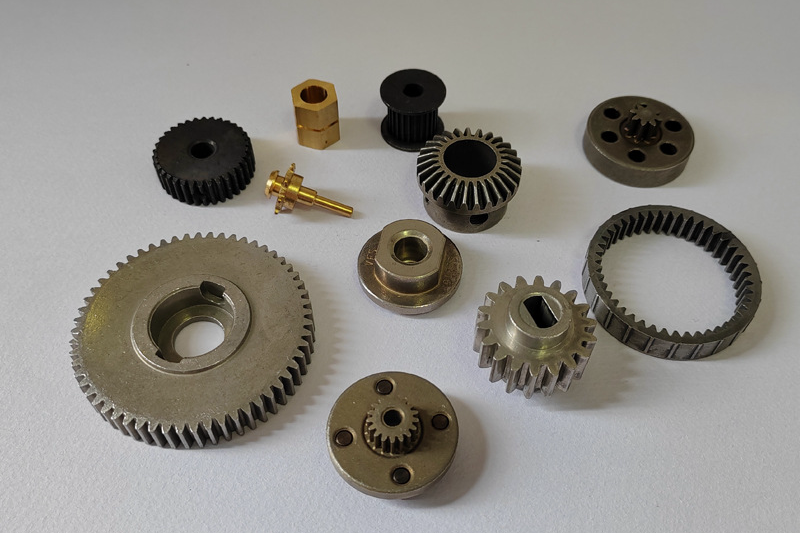17-4 PH Metal Injection Molding
17-4PH stainless steel is a precipitation-hardening martensitic stainless steel that contains approximately 17% chromium and 4% nickel as its major alloying elements. It offers an excellent combination of high strength, good corrosion resistance, and ease of machinability. 17-4PH is widely used for metal injection molded parts because it can achieve high strength and hardness through heat treatment while retaining good corrosion resistance and excellent mechanical properties.

The metal injection molding process combines the advantages of plastic injection molding with excellent properties of 17-4 PH. Plastic injection molding process allows high complexity for 17-4 PH MIM parts. Precipitation hardening heat treatment allows 17-4PH MIM parts to attain high tensile strength, yield strength, and hardness needed for demanding applications.
Common 17-4 PH Grade Used in MIM
Download PDF: MIM 17-4 PH Datasheet |
|---|
Typical 17-4 PH has five grades, including 17-4 PH Condition A (Annealed), 17-4 PH H900, 17-4 PH H1025, 17-4 PH H1150, 17-4 PH TH1050. Processed 17-4PH stainless steel for different product requirements.
17-4 PH Condition A (Annealed) - Excellent ductility and machinability. Tensile strength 700-900 MPa. Used where post-MIM machining is required.
17-4 PH H900 - Hardness of 34 HRC. Tensile strength 1100-1200 MPa. Yield strength 1000-1100 MPa. Good strength and ductility balance. Used for parts needing moderate strength.
17-4 PH H1025 - Hardness of 36 HRC. Tensile strength 1300-1400 MPa. Yield strength 1100-1300 MPa. High strength with some ductility. Used for high-load applications.
17-4 PH H1150 - Hardness of 40 HRC. Tensile strength 1450-1550 MPa. Yield strength 1350-1450 MPa. Very high strength and hardness. Used where strength is critical. Low ductility.
17-4 PH TH1050 - Reduced hardness of 35 HRC vs H1025. Increased ductility and toughness. Yield strength 1100-1200 MPa. Applications needing strength with improved fracture toughness.

Typical applications of 17-4PH MIM include aerospace and aircraft components, motorsport/racing parts, medical instruments, firearms components, watch parts, and other critical load-bearing hardware. The high strength, corrosion resistance, and range of achievable properties make 17-4PH suitable for diverse, demanding applications.
MIM 17-4 PH Typical Properties
Grade | Condition | Tensile Strength (MPa) | Yield Strength (MPa) | Impact Strength (J) | Hardness (HRC) | Young's Modulus (GPa) | Poisson's Ratio | Elongation (%) | Density (g/cm3) |
|---|---|---|---|---|---|---|---|---|---|
17-4PH | Condition A (Annealed) | 850 | 620 | 50 | 90 | 200 | 0.27 | 25 | 7.75 |
17-4PH | H900 | 1150 | 1050 | 30 | 34 | 200 | 0.27 | 10 | 7.75 |
17-4PH | H1025 | 1350 | 1200 | 25 | 36 | 200 | 0.27 | 8 | 7.75 |
17-4PH | H1150 | 1500 | 1400 | 15 | 40 | 200 | 0.27 | 3 | 7.75 |
17-4PH | TH1050 | 1300 | 1100 | 35 | 35 | 200 | 0.27 | 12 | 7.75 |
MIM 17-4 PH Key Features and Applications
Here are some key features, application examples, and reasons for using different 17-4PH metal injection molding grades:
17-4PH Condition A (Annealed):
Features: Excellent ductility and machinability in the annealed state. Low hardness.
Applications: Parts requiring subsequent machining.
Reasons: Soft state enables easy post-MIM machining.
17-4PH H900:
Features: Precipitation hardened to high strength. Balance of strength and ductility.
Applications: Aerospace components, firearm parts, motorsport.
Reasons: Suitable strength for many load-bearing parts while retaining some ductility.
17-4PH H1025:
Features: Highest achievable strength with some ductility. The hardness of HRC 36.
Applications: Aircraft landing gear, biomedical implants, automotive components.
Reasons: Very high strength and hardness combined with corrosion resistance.
17-4PH H1150:
Features: Maximum achievable hardness and strength. Hardness of HRC 40.
Applications: Cutting tools, dies, gauges, supra-high load parts.
Reasons: Extremely high hardness and strength required.
17-4PH TH1050:
Features: High strength with improved toughness and ductility vs H1025.
Applications: Aerospace forgings, fasteners, and off-shore components.
Reasons: High strength combined with fracture toughness are needed.

The range of 17-4PH conditions enables matching the properties to the specific application requirements through selection of suitable heat treatment.
How to Select Suitable 17-4 PH Grade For Your MIM Parts
Selecting the most suitable 17-4 PH grade for your Metal Injection Molding (MIM) parts involves a strategic approach to ensure optimal performance, quality, and cost-effectiveness. Here's a step-by-step guide to help you make the right choice:
Define Part Requirements:
Clearly outline the specific requirements for your MIM parts, including mechanical properties, corrosion resistance, and environmental conditions.
Evaluate the required mechanical properties - strength, hardness, ductility, etc. Select the Condition that most closely meets the requirements.
Understand 17-4 PH Grades:
Familiarize yourself with the 17-4 PH grades available, such as Condition A (Annealed), H900, H1025, H1150, and TH1050. Understand their unique properties and strengths.
Consider if post-MIM machining is needed. If yes, use Condition A annealed state for easy machining.
For high loads and wear resistance, use hardness between H900-H1150. H900 offers the best balance.
If fracture toughness is critical, opt for TH1050 over H1025 for improved toughness.
Ensure the strength and ductility needs are met. Higher hardness grades are more brittle.
Review corrosion resistance needs. While lower than austenitic grades, 17-4PH has good corrosion resistance.
Consider if high-temperature properties are essential. 17-4PH has functional strength up to 300-350°C.
H1150 Condition should only be used if extreme hardness/strength is necessary.
Review any impact strength requirements. Impact energy decreases with higher hardness.
Machinability is easier in softer conditions like A or H900.
Match Properties to Needs:
Compare the properties of each 17-4 PH grade with your part's requirements. Choose a grade that aligns with the desired characteristics for optimal performance.
Consider Application Factors:
Evaluate the specific conditions your MIM parts will encounter, such as temperature variations, corrosive environments, or mechanical stress. Select a grade that can withstand these conditions.
Industry Standards and Regulations:
Ensure that the selected 17-4 PH grade meets industry standards and regulatory requirements relevant to your application.
Consult Experts:
Seek guidance from Neway's materials engineers or production experts specializing in 17-4 PH materials. They can provide valuable insights based on their experience.
Prototype and Testing:
Create prototypes using different 17-4 PH grades and test their performance under realistic conditions. It helps validate the suitability of the grade for your application.
Cost Analysis:
Evaluate the cost of each 17-4 PH grade, including material expenses and processing costs. Balance the benefits of the grade with its overall cost.
Long-Term Availability:
Ensure that the chosen 17-4 PH grade will remain available for the duration of your product's lifecycle, preventing potential disruptions in production.
Risk Assessment:
Assess the potential risks associated with each 17-4 PH grade, considering factors such as reliability, durability, and potential challenges in manufacturing.
Customer Feedback and Historical Data:
Gather feedback from customers who have used specific 17-4 PH grades in similar applications if available. Historical data can provide valuable insights into real-world performance.
Neway's 17-4 PH MIM Parts Manufacturing
As a loyal Neway customer for over 5 years, I can confidently recommend their exceptional MIM parts manufacturing services. The quality of their 17-4 PH MIM components is unparalleled, with fantastic precision, material properties, and surface finishes. I greatly appreciate their technical expertise in selecting optimal MIM grades for my application needs.
Leading aerospace company Acme Inc. leverages Neway's MIM expertise to produce high-strength 17-4 PH components for aircraft landing gear. Acme optimized material properties by partnering with Neway for MIM while reducing part weight by 20%. Acme VP John Smith remarks, "Neway's 17-4 PH MIM parts exceeded our expectations."
As a new customer, I was thrilled to receive 20% off my first order of 17-4PH MIM parts from Neway. The parts exceeded my expectations - super precise tolerances and excellent material properties. Neway's 30 years of injection molding expertise clearly shows in the quality of their metal and plastic molded components. I wholeheartedly recommend trying Neway for your custom MIM, PCM, or CIM needs.

评论
发表评论